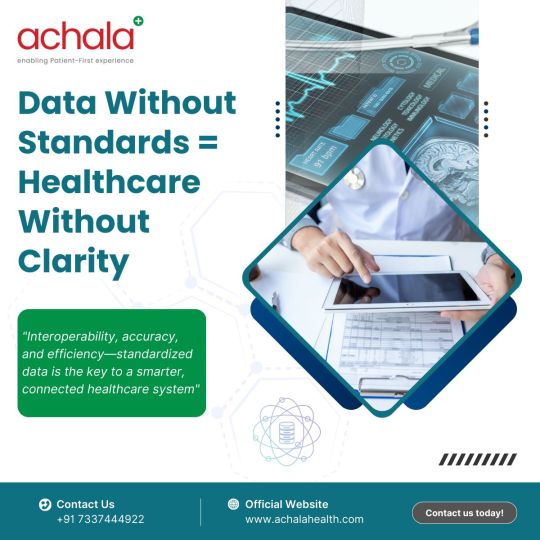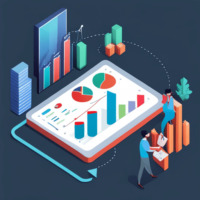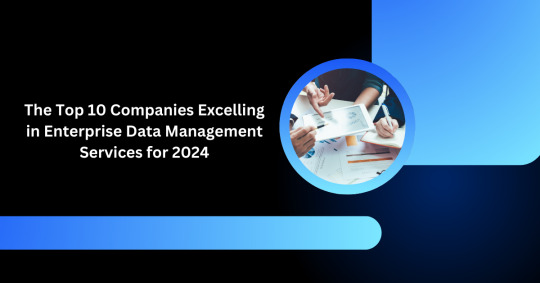#DataStandards
Explore tagged Tumblr posts
Text
CDISC in health care: Standardization of clinical data for better tomorrow
In today's data -operated health system's ecosystem, stability, accuracy and transparency are important for effective decision -making and compliance with regulations. As clinical tests become more complex and global, standardized clinical data has never been required. This is the place where CDISC (Clinical Data Interchange Standards Consortium) comes in the picture.
CDISC is a global ideal organization that develops data standards to streamline the collection, sharing and analysis of clinical research data. These standards are widely prominent regulatory officers that the US FDA is accepted by PMDA in Japan and Europe in Europe. This blog explains how CDISC changes health services and clinical research, why it is important, and how the organization can benefit from using CDISC standards.
What is CDISC?
Clinical Data Interchange Standards Consortium (CDISC) is an organization focused on creating recognized standards globally that enable clinical data interoperability from study design through analysis and reporting. CDISC was created in 1997 to solve the important problem of inconsistent data formats in clinical trials.
Over the years, CDISC has introduced a suit with a data model like:
SDTM (Study Data Tablet Model)
Adam (analysis data model)
CDash (Clinical Data Acquisition Standard Cohesion)
Send (standard for exchanging non -Clinical Data)
Each of these models plays a unique role in the clinical test data -life cycle, and ensures that data from different sources can be easily integrated, reviewed and analyzed.
Why CDISC means something in the health care system
The health care system is strongly regulated and ensuring that the patient's safety is a top priority. One of the biggest challenges is the uneven format and vocabulary used in clinical trials, making it difficult for regulatory agencies to effectively evaluate data.
CDISC helps remove this problem:
1. Data collection standardization
The CDISC CDash model standardizes the data collection field used in the Case Report Form (CRF), making it easier for sponsors and Cros to collect clean, consistent data from the beginning.
2. Fast regulator submission facilities
Both the FDA and PMDA must present clinical test data in CDISC analog formats. This not only accelerates the review process, but also reduces the possibility of rejection.
3. Improve data quality and openness
Standardization leads to minor errors, better audit paths and better computer sporability. It also simplifies cross -study analysis and supports evidence -based medical research.
4. Activation of reuse of data
Data formatted data using CDISC standards can be reused for meta-analysis, market monitoring and proof of the real world (RWE), thus maximizing the value of clinical data.
CDISC Standard In Action: Major Component
Let's take a closer look at some large CDISC models used in the health care system:
➤ CDash (Clinical Data Acquisition Standards Coordination)
Cdash is the first point of standardization. This defines how data should be collected during clinical studies. For example, demographic information, side effects and laboratory results are all gathered using pre-paradrated fields and formats.
➤ SDTM (Study Data Tablet Model)
SDTM is used to organize and format data to present the regulatory officers. This creates an integrated structure for datasets, which makes it easier to analyze and interpret the results. For example, important signs in many studies can be more easily compared if both are in SDTM format.
➤ Adam (analysis data model)
Adam is designed to support statistical analysis. This provides traceability on raw data from the results of the analysis. The Adam Data allows statisticians to perform complex analysis while maintaining compliance with regulatory requirements.
➤ Send (default for not -Ta Exchange)
Send CDISC uses principles in non-clinical (pre-human) studies, especially those that include animal testing. It supports better evaluation of drug security during advance development.
Global effect of CDISC
The CDISC standards are now accepted and are in many cases mandatory by international regulatory bodies. This is how they affect the global health services scenario:
Relationship compliance: In 2016, the FDA said that all new drug submissions should be in CDISC format. This is the United States makes the products a non-perfect for companies that want to get in the market.
Interoperability: CDISC data collected in India, analyzed in Germany, and the United States. The data presented in promoted global interpretation by ensuring that everything can initially be understood.
Cost savings: Standard data format Reduces time and cost associated with cleaning, integration and data verification.Global effect of cdisc
The CDISC standards are now accepted and are in many cases mandatory by international regulatory bodies. This is how they affect the global health services scenario:
Relationship compliance: In 2016, the FDA said that all new drug submissions should be in CDISC format. This is the United States makes the products a non-perfect for companies that want to get in the market.
Interoperability: CDISC data collected in India, analyzed in Germany, and the United States. The data presented in promoted global interpretation by ensuring that everything can initially be understood.
Cost savings: Standard data format Reduces time and cost associated with cleaning, integration and data verification.
Use CDISC: Challenges and best practice
Using CDISC standards can be challenging, especially for organizations infection with cultural monuments. Common challenges include:
Own lack of competence
Tool boundary
Resistance to change from stakeholders
Best practice:
Invest in training: Empower your data managers and bio -scientists with formal CDISC training.
Use automated tools: Many software tools can make old data into CDISC analog formats.
Partners with experts: Collaboration with CDISC-Farnne Cro or advisor in the transition phase.
Pilot projects: Start with a small test to validate the workflakes before the full scale implementation.
Future of CDISC in the health care system
The future of CDISC looks promising because health services are moving towards individual medicine, AI-driven diagnosis and real-time data analysis. Here are some trends on the horizon:
Integration with HL7 FHIR: CDISC is working to coordinate its standards with HL7S Fast Healthcare Interoperability Resources (FHIR), which can enable better clinical and real integration.
AI and automation: Trained machine learning models on CDISC standard data are more efficient and reliable.
Patient-focused tests: With CDISC, distance data and ESOCE integration becomes easier, facilitates decentralized clinical trials.
conclusion
CDISC is no longer a regulator requirement - it is a strategic feature of modern health care and clinical research. Its standardized data models enable the entire life cycle of medicine development to make, safe and more transparent decisions. For any organization involved in clinical trials, it is not only beneficial to understand CDISC - this is necessary.
If you look at your clinical operation or regulatory compliance, it's time to invest in CDISC skills.
#HealthcareInnovation#ClinicalResearch#ClinicalTrials#MedicalData#HealthTec#CDISC#DataStandards#ClinicalData#SDTM#ADaM#DataInteroperability
0 notes
Text
💻 RHIT Test Prep Question of the Day
Topic: EHR Implementation & Data Standards
Q: A new HIM director has been asked to ensure data content standards are implemented for the hospital's EHR. What should be the first step?
A. Call the EHR vendor and ask to review the system's data dictionary B. Identify data content requirements for all areas of the organization C. Schedule a meeting with all department directors to get their input D. Contact CMS to determine what data sets are required to be collected

✅ Correct Answer: B. Identify data content requirements for all areas of the organization
📚 Explanation: You can’t align your EHR’s data with standards until you understand what your organization actually needs. Start internally, then work outward with vendors and regulators.
#RHIT#EHR#HealthInformationManagement#HIM#AHIMA#RHITprep#DataStandards#EHRimplementation#AcornHIM#Studyblr
0 notes
Text
Blog: What is Master Data Governance and Why Does Your Business Need It?
#MasterData#DataGovernance#BusinessNeeds#DataManagement#DataQuality#BusinessStrategy#DataIntegrity#DataSecurity#DataCompliance#DataGovernanceFramework#DataControl#BusinessGrowth#DataStandards#BusinessIntelligence#EnterpriseData#DataGovernancePolicy
0 notes
Text

Unlocking the Power of Data in Indian Healthcare!
Healthcare without data standards is like a puzzle with missing pieces—disconnected, inefficient, and error-prone. Standardized data ensures seamless information exchange, faster diagnoses, and smoother insurance processing.
🔹 Interoperability: Break silos & connect systems effortlessly 🔹 Better Patient Care: Real-time, accurate medical records 🔹 Compliance & Security: Adhering to ABDM, FHIR & HL7
At Achala Health Services Private Limited, we’re making healthcare smarter & more connected with AI-driven solutions. Is your system ready for the future? 🔗 Read more: https://lnkd.in/gNnGqTYn
#DataStandards#HealthcareInnovation#DigitalHealth#AchalaHealth#abdm#HealthTech#Interoperability#FHIR#HL7#EHR#AyushmanBharat#ABDM#HealthForAll#MedTechIndia#HealthcareTransformation#BetterPatientCare#ConnectedHealthcare#SmartHospitals#HealthDataExchange#AIinHealthcare
0 notes
Text
Lack of Data Standards Hurts Healthcare Interoperability
In healthcare, the absence of universal data standards is a major obstacle to seamless interoperability. When systems can't "talk" to each other, vital patient information is lost, duplicated, or delayed. This not only hampers coordinated care but also increases costs and risks for providers and patients alike. To unlock the true potential of healthcare technology, we need standardized frameworks that ensure data can flow effortlessly across platforms, improving decision-making, reducing errors, and enhancing patient outcomes. It's time to prioritize interoperability for a connected, efficient healthcare system.
0 notes
Text
The Power of Data Quality Management
In today’s environment, data is the engine of any organization. The requirement to maintain data quality is becoming more and more important as organizations continue to gather ever-increasing amounts of data. A data manager or data organization can maintain high-quality information by implementing a set of techniques known as data quality management. This collection of procedures is used at every stage of the data handling process, from gathering to dissemination, implementation, and data analytics.
#DataQuality#DataManagement#QualityData#DataIntegrity#DataGovernance#DataAccuracy#DataStandards#DataCompliance#DataValidation#DataStewardship
0 notes
Text
Metadata: 100 Guide to Understanding and Leveraging Data About Data

In this age of digitization, data has taken the place of gold. However, the component known as metadata is what gives this gold its actual value. This article will take you through the exciting world of metadata, illuminating its meaning, various types, examples, purpose, and other information.

Metadata Metadata is a phrase that frequently comes up in conversations about big data, data management, and data science. And what exactly makes it so vital? This tutorial aims to provide an in-depth review of metadata and its function in the contemporary data landscape, to answer the issues posed here and others.
What Exactly Does It Mean to Have Metadata?
Metadata, sometimes known as 'data about data,' is information that either describes, locates, or in some other way makes it simpler to obtain, utilize, or manage data. Metadata is a collection of data that, in addition to providing information about other data, also characterizes that data. A digital image may, for instance, contain metadata that portrays the picture in terms of its size, color depth, image resolution, when it was made, and a variety of other data. The metadata associated with a text document may include information such as the document's length, the author's name, the date the document was created, and a concise description of the document's content.
An Analysis of the Development of Metadata from a Historical Standpoint
The idea of metadata has been around for quite some time. It dates back to the beginning of structured collections of knowledge and has been around ever since. Metadata has always been essential to the rapid and easy retrieval of information, whether in the form of library card catalogs or the digital tags used on contemporary websites. In the past, metadata was mainly utilized in libraries and archives to catalog papers and other items and retrieve them when needed. The usage of metadata has become substantially more widespread with the introduction of the internet and other forms of digital technology. Nowadays, metadata is utilized in various sectors, including digital libraries and databases, websites, and social media platforms, to name just a few examples.
The Importance of Metadata in Today's World and the Functions It Serves
Metadata is vital in the data-driven society that we live in today. It is helpful for various data-related tasks, including data management, data integration, data mining, and data governance. The metadata is responsible for making the data understandable and usable. Metadata has a wide range of applications in the area of digital computing. Metadata is used by search engines so that they can comprehend the content of web pages and produce more accurate results. Metadata is the information digital cameras store regarding capturing a photograph. Social media networks use metadata to organize and classify postings.
What Kinds of Things Might Be Considered Metadata?
There is metadata in everything. The information, such as the date, time, location, and even the camera settings, are saved as metadata whenever you snap a picture with your smartphone. Examples of metadata include the artist's name, the song title, the album name, and the genre of a music file. In Everyday Life: Examples of Common Uses for Metadata Metadata is an essential component of everything we encounter in our lives, from the books in a library to the posts on social networking websites. It enables us to locate, organize, and comprehend information rapidly and effectively. For instance, when you use a search engine to locate material online, you use metadata. The search engine analyzes metadata to comprehend the content of web pages and return results pertinent to the query. When you take a picture with your digital camera, the camera records information about the image. This metadata includes the date and time the photo was taken, the camera settings, and if your camera has a GPS feature, the picture's location. This metadata may be utilized later to categorize your photographs, locate specific graphics, or even understand the conditions when the image was shot.

The Role Of Metadata In The Online World The Role of Metadata in the Online World: Illustrations from the Tech Sector In the realm of information technology, metadata may serve many purposes. Websites, for instance, will often include metadata in meta tags to convey the page's subject matter to search engines. Databases employ metadata to give a roadmap to their material. Metadata describes other information; for instance, the structure of a database, the types of data kept in the database, and how the data is arranged may all be described using metadata. It is possible to utilize this information to understand the structure of the database, compose queries that will obtain data from the database, and manage the data stored in the database.
Which Three Different Types of Metadata Are Correct?
It is possible to divide metadata into three distinct types: descriptive, structural, and administrative. The Secret to Discoverability Lies Within Descriptive Metadata Metadata that is descriptive contains things like the title, abstract, author, and keywords, all of which contribute to the process of locating and identifying data. The purpose of this kind of metadata is to give information that can assist in finding and distinguishing the data. For instance, a book's title, author, and keywords are all examples of descriptive information that might help you locate the book in a physical location such as a bookshop or library. The blueprint for data organization is known as structural metadata. The organization, structure, and kinds of data can be better understood with the help of structural metadata. It is a way of describing the arrangement of the individual parts of a dataset or item. For the sake of illustration, structural metadata for a book might include details such as the sequence in which the chapters are presented, the total number of pages, and the connection between the branches and the book. Administrative metadata is known as the keeper and protector of data rights. Administrative metadata may be used to administer a resource, such as the date and method of creation, the kind of file and any other relevant technical information, and the users authorized to use the help. The management and administration of data make use of this kind of metadata. An example of administrative metadata for a digital image may include: The image's creation date. The program used to make the image. The rights and permissions are connected with the idea.
What is the Most Important Role That Metadata Plays?
The primary function of metadata is to make it easier to find important information, to make data administration more efficient, and to safeguard information so that it may be preserved. Improving the Capability to Discover Data: The Part Played by Metadata Metadata improves the discoverability of data by giving helpful information about the material. It assists users in locating the pertinent facts at the appropriate moment. When you use a search engine, for instance, to obtain information on the internet, the search engine uses metadata to interpret the content of web pages and offer search results relevant to your query. Facilitating Data Management: How Metadata Contributes By giving a context for the data that has been saved, metadata makes data administration much more effortless. It assists in integrating data, ensuring data quality, maintaining data stewardship, and managing data operations. For instance, metadata may be utilized in a database to understand the structure of the database, compose queries for retrieving data, and collect the data kept inside the database.

The Value Of Metadata In Protecting Users' Personal Information And Private Data The Value of Metadata in Protecting Users' Personal Information and Private Data Metadata is essential in protecting users' privacy and keeping their data secure. It explains who can access the data, where it should be housed, and how it should be safeguarded from unauthorized access. For instance, administrative metadata could contain information about the rights and permissions associated with a specific piece of data. This kind of information can control who has access to the data and what they are allowed to do with it by holding who has access to the data and what they are allowed to do with it.
The Value of Metadata in many Different Fields
Metadata is not only an idea; instead, it is a potent instrument that drives insights and choices across a variety of areas. In data science, metadata is the engine that drives insights and predictions. In data science, metadata is information about data that helps researchers understand the data better. It facilitates data analysis, data visualization, and data mining. In a dataset, metadata can offer information about the variables, their kinds, and their relationships. This information can be found in a dataset, which can be used to pick the proper analytic techniques and accurately interpret the findings. Informing Strategic Decisions Through the Use of Metadata in Business Intelligence In the realm of business intelligence, metadata is what supplies the context, which in turn enables more informed and effective strategic decision-making. It helps integrate data, manage data warehouses, and do data analytics. In a business intelligence system, for instance, metadata may be utilized to understand the structure of the data warehouse, compose queries to obtain data for use in reports and dashboards, and correctly interpret the results of those searches. The role of metadata in data warehousing is to simplify storing and retrieving data. Metadata is utilized in data warehousing to facilitate effective data organization, location, and retrieval. It enables data storage, data transfer, and data lifecycle management. For instance, in a data warehouse, metadata may be used to understand the structure of the warehouse, the types of data that are kept in the warehouse, and how the data is arranged. This understanding can then be used to effectively manage the data stored in the warehouse and efficiently retrieve data.
The Problems and the Answers in the Field of Metadata Management
Metadata is helpful, but keeping track of it has its own unique set of issues. Nevertheless, one can triumph over these obstacles by employing the appropriate tactics and resources. The Most Frequently Encountered Problems in Metadata Management and How to Fix Them Problems with data quality, a lack of standards, and worries about data security are some of the more prevalent obstacles associated with managing metadata. The implementation of data quality measures, the adoption of metadata standards, and the enforcement of data security regulations are all potential solutions. Implementing data quality procedures such as data validation, cleansing, and auditing solves data quality problems. Adopting metadata standards that establish criteria for the generation, usage, and administration of information can solve the problem of a need for more standardization. Concerns about data safety can be alleviated by implementing data security rules that restrict access to metadata, shield it from illegal access and change, and protect it from exposure to potential threats.
Guidelines for Efficient and Effective Management of Metadata
Implementing best practices for metadata management, such as setting explicit metadata policies, utilizing tools for metadata management, and routinely updating and evaluating metadata, is necessary to manage metadata effectively. It is possible to guarantee that metadata is generated, utilized, and maintained in a manner that is consistent and successful by defining explicit metadata policies and putting them into place. Using metadata management solutions may assist in automating the process of creating, utilizing, and managing metadata, making the process more time-effective and less prone to mistakes. By evaluating and updating it regularly, it is possible to guarantee that metadata will continue to be accurate, relevant, and valuable. Trends and Forecasts Regarding the Development of Metadata: As we progress toward a future driven more and more by data, the metadata function will become even more critical. Emerging Trends in Metadata Management The use of artificial intelligence and machine learning in metadata production and administration is one example of an emerging trend in metadata management. Other examples include the rising relevance of metadata in data governance and the rise of metadata in the era of big data and the Internet of Things. It is possible to employ AI and machine learning to automate the metadata production and administration process, resulting in increased productivity and precision. Metadata is gaining more attention due to the rising significance of data governance since it offers the context and understanding necessary to regulate data successfully. The advent of big data and the Internet of Things is leading to an explosion in the quantity of metadata since every piece of data created by these technologies comes with its own information set. This explosion in the amount of metadata is leading to an explosion in the number of data.
The Prospects for Metadata Soon: Predictions and Anticipations
The future of metadata has a lot of potential. The value of metadata in data management and the decision-making process is expected to expand exponentially due to technological developments and increased awareness of the significance of data. The need for efficient metadata management will only grow as we continue to produce and consume more data in the future.
Summary: The Crucial Part That Metadata Plays in Today's Data-Driven World
In a world driven by data, metadata is an instrument that cannot be ignored. It gives the data context, making it more intelligible and valuable. Metadata is essential in all aspects of data science, business intelligence, and data warehousing, playing a necessary part in generating insights, forming choices, and optimizing business processes. Because the significance of metadata is expected to increase as we go closer to the future, it is a subject that is well worth investigating and becoming knowledgeable about. Metadata is more than just 'data about data.' It is the essential element that enables data to realize its full potential. By giving context, metadata makes data relevant and valuable. It allows us to locate the appropriate data at the right moment, comprehend the data we already have, and make educated decisions based on our data. Metadata is becoming more significant in big data, characterized by an unprecedented increase in data amount, variety, and velocity. The metadata assists us in navigating the immense ocean of data, locating the information we require, and making efficient use of it. The need for efficient metadata management will only grow as we continue to produce and consume more data in the future. The difficulties associated with managing metadata are accurate, but they can be surmounted with the appropriate approaches and technologies. We can guarantee our metadata's precision, use, and relevance if we implement the most effective procedures for managing metadata. The outlook for metadata in the future is quite positive. The value of metadata in data management and the decision-making process is expected to expand exponentially due to technological developments and increased awareness of the significance of data. Understanding the power of metadata and using it effectively will be essential to our progress as we move toward a future that data will drive. Read the full article
#BusinessIntelligence#DataAnalysis#DataCompliance#DataGovernance#DataInfrastructure#DataIntegration#DataLifecycle#DataManagement#DataMigration#DataMining#DataOperations#DataPrivacy#DataProcessing#DataQuality#DataScience#DataSecurity#DataStandards#DataStewardship#DataStorage#DataStrategy#DataSystems#DataTransformation#DataVisualization#DataWarehousing#Metadata
0 notes
Text
Unlock Your Business Potential with EnFuse Solutions' Data Management Expertise - Begin Today!

Elevate your business operations with EnFuse Solutions’ data management expertise. Their team specializes in data profiling, enrichment, and standardization to ensure clean, consistent, and actionable data. Gain better insights, improve decision-making, and boost operational efficiency with EnFuse customized solutions tailored to your enterprise data challenges.
Visit this link to explore how EnFuse Solutions can streamline your data management process: https://www.enfuse-solutions.com/services/data-analytics-services/data-management-services/
#DataManagement#DataManagementServices#DataGovernance#DataQuality#MasterDataManagement#DataIntegration#DataStandardization#DataValidation#DataCleansing#DataProcessing#DataManagementCompanies#DataManagementCompanyinIndia#DataManagementIndia#DataManagementServicesIndia#EnFuseSolutions#EnFuseSolutionsIndia
0 notes
Text
Revolutionize Your Data Management Approach with EnFuse Solutions to Drive Data Efficiency and Growth

Revolutionize your data management strategy with EnFuse Solutions. Their expert services in data enrichment, profiling, and migration help businesses unlock hidden insights, streamline operations, and ensure data accuracy.
See how EnFuse Solutions empowers growth through expert data management services: https://www.enfuse-solutions.com/services/data-analytics-services/data-management-services/
#DataManagement#DataManagementServices#DataGovernance#DataQuality#MasterDataManagement#DataIntegration#DataStandardization#DataValidation#DataCleansing#DataProcessing#DataManagementCompanies#DataManagementCompanyinIndia#DataManagementIndia#DataManagementServicesIndia#EnFuseSolutions#EnFuseSolutionsIndia
0 notes
Text
Transform Your Data into Actionable Insights with EnFuse Solutions' Tailored Services

Drive business success with EnFuse Solutions' expert data management services. They ensure comprehensive data profiling, accurate validation, and insightful enrichment that turns your information into strategic assets. From cleanup to optimization, EnFuse delivers trustworthy, actionable data that drives smarter decisions and improves business outcomes.
Explore how EnFuse Solutions’ reliable data management services can elevate your business strategy: https://www.enfuse-solutions.com/services/data-analytics-services/data-management-services/
#DataManagement#DataManagementServices#DataGovernance#DataQuality#MasterDataManagement#DataIntegration#DataStandardization#DataValidation#DataCleansing#DataProcessing#DataManagementCompanies#DataManagementCompanyinIndia#DataManagementIndia#DataManagementServicesIndia#EnFuseSolutions#EnFuseSolutionsIndia
0 notes
Text
Maximize Data Utilization and Performance with EnFuse Solutions' Tailored Strategies!

Unlock the full potential of your data with EnFuse Solutions' tailored strategies. Their expert services include seamless standardization, robust data cleansing, and effective enrichment, ensuring your business performance reaches new heights.
To harness your data as a valuable asset and propel your business growth, learn more here: https://www.enfuse-solutions.com/services/data-analytics-services/data-management-services/
#DataManagement#DataManagementServices#DataGovernance#DataQuality#MasterDataManagement#DataIntegration#DataStandardization#DataValidation#DataCleansing#DataProcessing#DataManagementCompanies#DataManagementCompanyinIndia#DataManagementIndia#DataManagementServicesIndia#EnFuseSolutions#EnFuseSolutionsIndia
0 notes
Text
Say goodbye to manual data sorting and categorization! 🗂️ Use ASK_LOCAL formulas in the (Un)Perplexed Spready to classify data based on context—perfect for large datasets. 🚀📈
https://matasoft.hr/qtrendcontrol/index.php/un-perplexed-spready/un-perplexed-spready-various-articles/141-the-spreadsheet-evolution-is-here-meet-un-perplexed-spready-ai-that-thinks-for-you

#DataCategorization #SmartSpreadsheets #EfficiencyBoost #DataStandardization #ProductivityTools #AI #Spreadsheets #SpreadsheetRevolution #AIProductivity #AugmentedIntelligence #HumanAITeamwork #WorkLifeBalance #AIProductivity #DataCleaning #Standardization #ProductAnalysis #AITools #AIAssistant #DataAnnotation #EcommerceTools #FinTech #DataAnalysis #InventoryManagement #DataInsights #DataScience #ArtificialIntelligence #LLM #AffordableAI #SmallBusiness #DataManagement #SpreadsheetRevolution #DataExtraction #AutomatedAnalytics #WorkSmarter #BusinessEfficiency #DataAnalytics #FutureOfWork #SpreadsheetAutomation #ProductivityHack #SmartSpreadsheets #DigitalTransformation #AutomationTools #WorkplaceInnovation #DataDriven #DataScience #Spreadsheet #SpreadsheetSoftware #BusinessIntelligence #Ollama
0 notes
Text

ACES vs. Non-ACES Data
Non-ACES ❌ Unstructured & Inconsistent ❌ Prone to Errors & Mismatches ❌ Difficult to Scale
ACES ✅ Industry-Standardized & Precise ✅ Minimizes Fitment Errors ✅ Seamless Integration with Major Platforms
For seamless fitment solutions, trust PCFitment. Visit us at: www.pcfitment.com
#ACES#NonACES#FitmentData#ProductData#DataStandardization#AutomotiveTech#SeamlessIntegration#FitmentSolutions#PCFitment#AutoIndustry#DataAccuracy#TechInnovation#ProductManagement#DigitalTransformation
1 note
·
View note
Text
The Top 10 Companies Excelling in Enterprise Data Management Services for 2024

In today’s data-driven world, enterprise data management services are crucial for organizations to manage, store, and leverage their data effectively. With increasing data volumes and complexities, companies need reliable enterprise data management (EDM) systems to maintain data accuracy, compliance, and efficiency. Selecting the right partner from leading enterprise data management companies can give businesses a competitive edge by unlocking the true potential of their data.
1. Vee Technologies
At the forefront of enterprise data management companies, Vee Technologies offers comprehensive EDM data management solutions tailored to the unique needs of businesses. With cutting-edge technology and domain expertise, Vee Technologies ensures data accuracy, security, and scalability, empowering organizations to make data-driven decisions seamlessly.
What makes Vee Technologies stand out is its ability to integrate enterprise data across multiple systems and streamline processes through advanced enterprise database management. Their client-centric approach ensures businesses get the most out of their data, maintaining compliance with regulatory standards while enhancing efficiency.
2. SAP
SAP offers powerful enterprise data management systems that integrate seamlessly with ERP solutions. Known for its reliability, SAP’s data management services enable enterprises to maintain high data quality, ensuring consistency across business operations.
3. IBM
IBM’s expertise in EDM data management revolves around governance, security, and analytics. Their tools help businesses manage data lifecycle processes effectively, from collection to analysis, ensuring smooth and reliable data management.
4. Oracle
Oracle provides enterprise database management tools designed for scalability and performance. With cloud-based EDM platforms, Oracle enables enterprises to efficiently store, organize, and analyze data across various departments.
5. Informatica
Informatica is known for its data integration and management capabilities. Their enterprise data management services help organizations consolidate data from multiple sources, ensuring data accuracy, governance, and analytics.
6. Microsoft
Microsoft’s enterprise data management system on the Azure platform offers robust data integration and governance tools. Businesses rely on Azure for real-time analytics and data management, making Microsoft a top player in the EDM space.
7. Talend
Talend specializes in data integration and governance, offering scalable EDM data management solutions. With open-source capabilities, Talend provides flexibility to enterprises looking to manage and leverage data effectively.
8. TIBCO
TIBCO excels in providing real-time enterprise data management solutions, enabling businesses to process and analyze data instantly. Their platform ensures data consistency and quality across the organization.
9. SAS — Advanced Data Analytics and Management
SAS focuses on combining enterprise data management with analytics. Their EDM solutions provide enterprises with actionable insights while ensuring that data remains clean, accurate, and secure.
10. Collibra
Collibra is renowned for its data governance solutions, offering businesses robust enterprise data management services. Their platform ensures compliance with data regulations, enabling organizations to stay ahead in a data-driven landscape.
Why Enterprise Data Management Matters
With the growing importance of data in business operations, enterprise data management systems ensure that data remains consistent, accurate, and accessible. Effective EDM data management helps organizations make faster decisions, stay compliant, and achieve operational excellence.
Conclusion
Choosing the right partner from these enterprise data management companies can significantly impact your business operations and data strategy.
By selecting the right enterprise data management system, companies can stay ahead in today’s competitive landscape, leveraging data to drive growth and innovation. Whether it’s compliance, governance, or real-time insights, these top companies have the solutions to ensure your business thrives.
0 notes
Text
1 note
·
View note
Text
Supercharge Your Business with EnFuse Solutions' Industry-Leading Data Management Services - Start Today!

Unlock operational excellence with EnFuse Solutions’ advanced data management services. Their expert team ensures seamless data profiling, enrichment, and migration for improved decision-making. Trust EnFuse for efficient, scalable, and industry-leading data transformation that drives measurable business outcomes. Discover how EnFuse Solutions helps businesses thrive through streamlined data management — visit here to learn more: https://www.enfuse-solutions.com/services/data-analytics-services/data-management-services/
#DataManagement#DataManagementServices#DataGovernance#DataQuality#MasterDataManagement#DataIntegration#DataStandardization#DataValidation#DataCleansing#DataProcessing#DataManagementCompanies#DataManagementCompanyinIndia#DataManagementIndia#DataManagementServicesIndia#EnFuseSolutions#EnFuseSolutionsIndia
0 notes